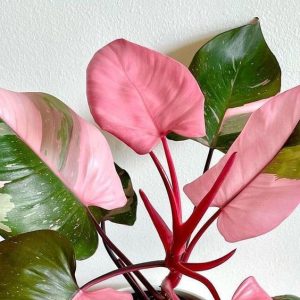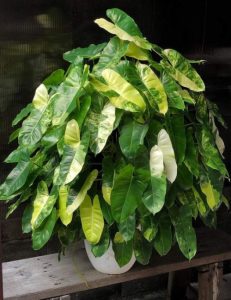- English
- Chinese
- French
- German
- Portuguese
- Spanish
- Russian
- Japanese
- Korean
- Arabic
- Irish
- Greek
- Turkish
- Italian
- Danish
- Romanian
- Indonesian
- Czech
- Afrikaans
- Swedish
- Polish
- Basque
- Catalan
- Esperanto
- Hindi
- Lao
- Albanian
- Amharic
- Armenian
- Azerbaijani
- Belarusian
- Bengali
- Bosnian
- Bulgarian
- Cebuano
- Chichewa
- Corsican
- Dutch
- Estonian
- Filipino
- Finnish
- Frisian
- Galician
- Georgian
- Gujarati
- Haitian
- Hausa
- Hawaiian
- Hebrew
- Hmong
- Hungarian
- Icelandic
- Igbo
- Javanese
- Kannada
- Kazakh
- Khmer
- Kurdish
- Kyrgyz
- Latin
- Latvian
- Lithuanian
- Luxembou..
- Macedonian
- Malagasy
- Malay
- Malayalam
- Maltese
- Maori
- Marathi
- Mongolian
- Burmese
- Nepali
- Norwegian
- Pashto
- Persian
- Punjabi
- Serbian
- Sesotho
- Sinhala
- Slovak
- Slovenian
- Somali
- Samoan
- Scots Gaelic
- Shona
- Sindhi
- Sundanese
- Swahili
- Tajik
- Tamil
- Telugu
- Thai
- Ukrainian
- Urdu
- Uzbek
- Vietnamese
- Welsh
- Xhosa
- Yiddish
- Yoruba
- Zulu
- Kinyarwanda
- Tatar
- Oriya
- Turkmen
- Uyghur

Ljubitelji biljaka poput Filodendron zbog lijepog rasta i sferičnog lišća. Filodendron, sobna biljka s lišćem, ima potrebu za vodom koja zauzima vodeće mjesto u njezi biljke. Poznavanje potreba Philodendrona za vodom može pomoći vrtlarima da održe biljku u dobroj formi, izbjegnu česte bolesti i jamče njenu dekorativnu privlačnost.

Filodendron
Jednostavne potrebe za vodom filodendrona
Voda se posebno traži u Filodendronu. Preferira da nema nakupljanje vode, ali tlo mora održavati vlažnim. Iako previše ili premalo vode može imati štetan učinak na biljku, prava tehnika zalijevanja može potaknuti dobar razvoj filodendrona. Dobra briga o Philodendronu ovisi o saznanju njegovih osnovnih potreba za zalijevanjem.
Tlo za filodendrone prije svega mora se održavati pomalo vlažnim. Idealno bi bilo da se voda nanosi kada je površina tla suha. Dok nedovoljna količina vode može uzrokovati sušenje listova biljke i žutost rubova, dovoljno vode može uzrokovati skupljanje vode u korijenu, što može dovesti do truljenja korijena i bolesti biljaka. Stoga je važno usavršiti odgovarajući raspored i tehniku navodnjavanja.
Raspored zalijevanja i učestalost
Mnogi čimbenici utječu na učestalost zalijevanja, uključujući ambijentalne okolnosti, sezonske varijacije i fazu razvoja biljke. Dok se u jesen i zimi brzina rasta biljke usporava i učestalost zalijevanja mora biti smanjena, Philodendron općenito treba češće zalijevanje tijekom vrhunca sezone rasta u proljeće i ljeto.
Filodendron brže raste u proljeće i ljeto, a brže se iskorištava i vlaga iz tla. Trenutno bi trebalo zalijevati jednom tjedno i mijenjati na vrijeme ovisno o suhoći tla. Jedan dobar način da utvrdite je li potrebno zalijevanje je provjeriti površinsku razinu vlage u tlu. Zalijevanje se može vršiti dva do tri centimetra duboko, na površini zemlje.
Stopa rasta filodendrona se usporava, a potreba za vodom također se smanjuje u jesen i zimi. Obično jednom svaka dva tjedna, učestalost navodnjavanja može se smanjiti tijekom tog razdoblja. U hladnim područjima, transpiracija biljaka je smanjena i vlaga u tlu se zadržava dulje, stoga ograničenje zalijevanja može pomoći u izbjegavanju problema s korijenjem koji proizlaze iz previsoke vlažnosti tla.
Tehnika zalijevanja
Zdrav razvoj filodendrona ovisi o pravoj tehnici zalijevanja. Slijedi nekoliko učinkovitih tehnika zalijevanja:
Zalijevanje treba obaviti tako da tlo može biti podjednako pokriveno. Čujte se od fokusiranja vode u jednoj regiji jer bi to moglo dovesti do suhog tla u drugim područjima i previše vode u korijenskom području. Korištenje zalijevanja može vam pomoći da poprilično distribuirate vodu preko površine zemlje tako da je cijeli sloj tla vlažan.
Philodendron preferira ne nakupljanje vode na korijenima, pa pažljivo pazi na odvodnju tijekom zalijevanja. Odaberite tlo s odgovarajućom drenažom, a zatim provjerite dno cvijeća za dovoljne rupe za odvodnju. Provjerite je li voda nakuplja u šasiji nakon zalijevanja; Zatim ispraznite sakupljenu vodu postupno kako biste spriječili natapanje korijena.
Voda bi trebala biti sobna temperatura; To će vam pomoći da spriječi štetu biljci previše hladnom ili vrućom vodom. Korijeni biljke mogli bi patiti bilo u hladnoj ili vrućoj vodi, što dovodi do lošeg razvoja ili štete. Održavanje temperature vode slična sobnoj temperaturi pomaže Philodendronu da ga bolje apsorbira.
Razvoj vlage tla
Tajna ispravljanja navodnjavanja je poznavanje vlage tla. Ovo su neke učinkovite metode otkrivanja vlage tla:
Stavite prst 2–3 cm duboko u zemlju. Ako tlo izgleda suho, morate ga zalijevati. Ako tlo i dalje bude vlažno, trebali biste pričekati prije zalijevanja. Ovaj jednostavan i koristan pristup može pomoći u utvrđivanju suhoće tla.
Mjerač vlage tla točniji je instrument otkrivanja koji će omogućiti precizno procijenjeno sadržaj vlage u tlu. Nakon stavljanja mjerača vlage u zemlju, procijenite sadržaj vlage u zemlji, ovisno o čitanju. Smanjenje ljudske pogreške i nudeći dosljedniju bazu za zalijevanje, mjerač vlage može
Tipična briga za zalijevanje i popravke
Dok držite Philodendron, možda ćete naići na neke tipične probleme s zalijevanjem. Slijedi neka tipična pitanja i rješenja:
Obično je trulež korijena posljedica previše vode zbog čega je tlo vlažno. Smanjenje učestalosti zalijevanja i provjera drenaže tla pomoći će u rješavanju ovog problema. Ako se otkrije truljenje korijena, biljku treba postupno izvaditi iz posude; trulo korijenje treba izrezati i zamijeniti svježim, dobro dreniranim tlom.
Obično nedostatak vode uzrokuje suhoću lišća. Odgovor na ovo je jamčiti da je tlo stalno pomalo vlažno i povećati učestalost zalijevanja. Štoviše, raspršivanje vodene magle povećat će vlažnost zraka i tako pomoći u ublažavanju stanja suhoće lišća.
Ili neadekvatna drenaža tla ili prekomjerno zalijevanje mogu dovesti do žućenja lišća. Ispitajte vlažnost i drenažu tla; promijeniti učestalost navodnjavanja; pazite da tlo nije previše vlažno. Ako je problem žutila ozbiljan, razmislite o promjeni tla i provjerite utječu li štetnici i bolesti na biljku.

Filodendron
Pravilan razvoj filodendron uvelike ovisi o njegovim potrebama za vodom. Dobro održavanje počinje poznavanjem temeljnih potreba za navodnjavanjem—uključujući prikladnu učestalost, tehniku i alat za otkrivanje vlažnosti tla. Učenje pravih metoda navodnjavanja pomoći će vam da izbjegnete tipične probleme s vodom i jamčiti da Philodendron održava optimalne uvjete za razvoj u zatvorenom prostoru. Zdravstveni i estetski učinak filodendrona bit će bolji ako se rutinski provjerava stanje biljke i modificira raspored zalijevanja kako bi odgovarao varijacijama u različitim godišnjim dobima i okolišnim okolnostima.
Prethodne vijesti
Najbolje rastuće okruženje za PhilodendronSljedeće vijesti
Suočavanje s prerastom Philodendron


